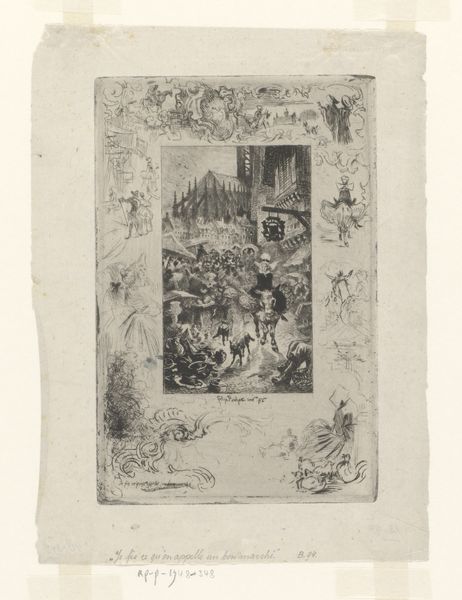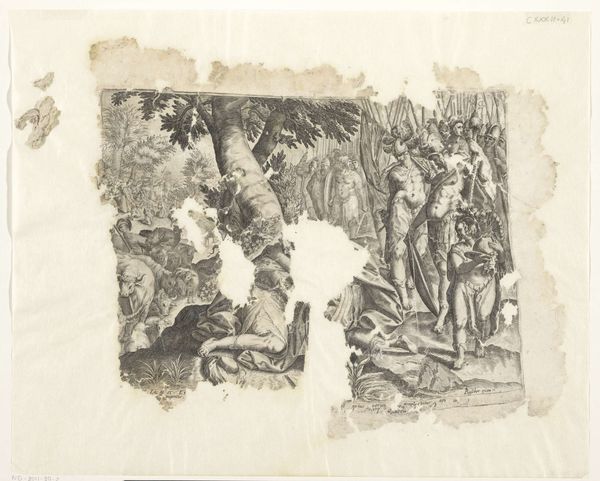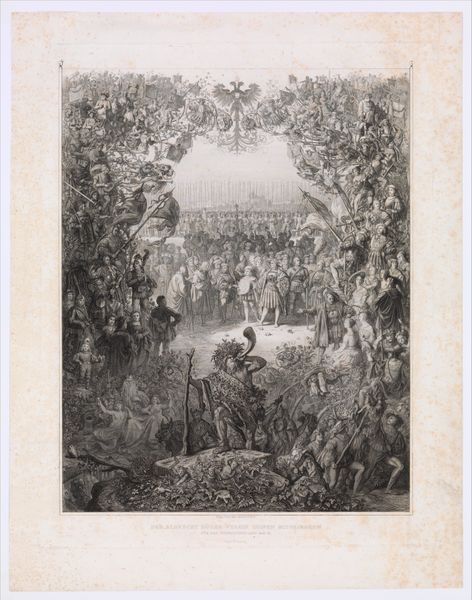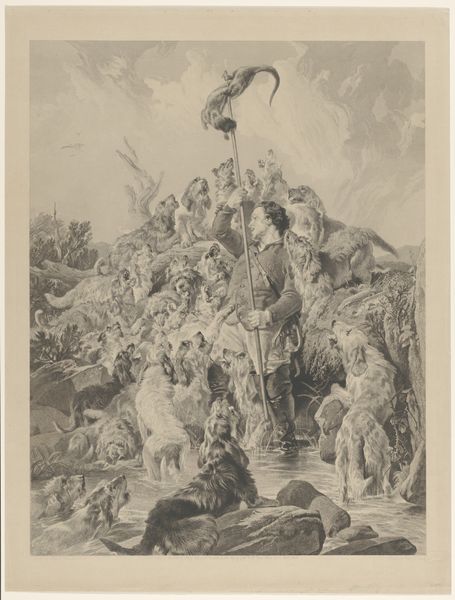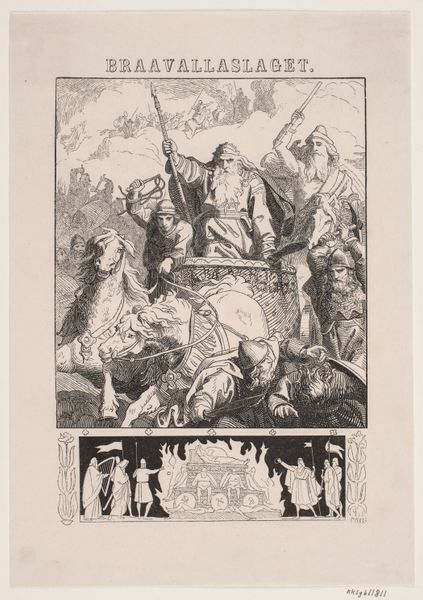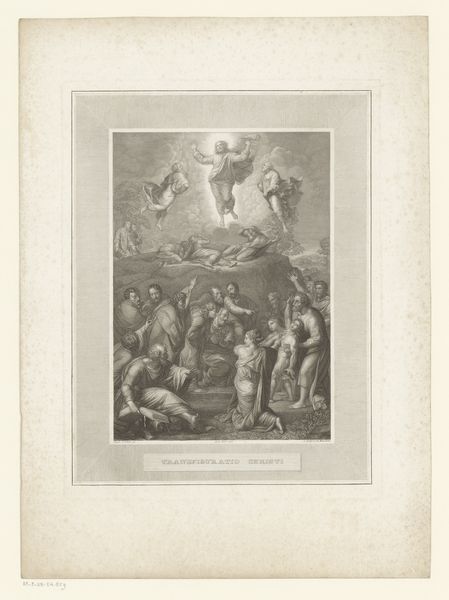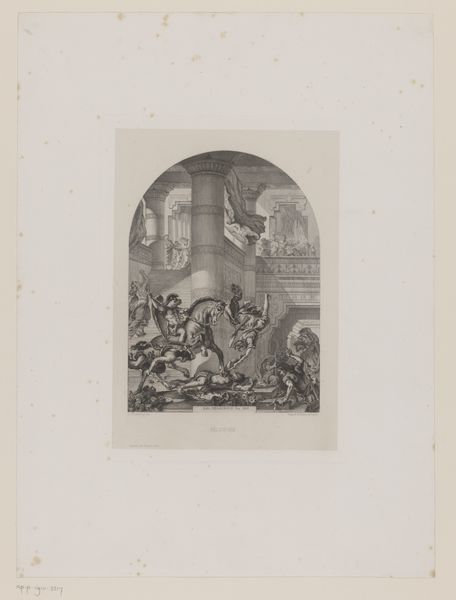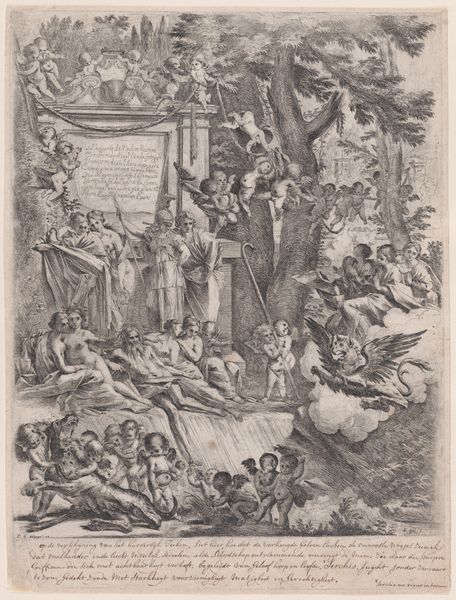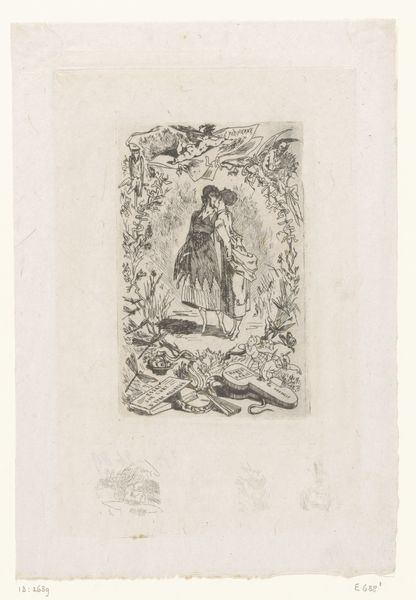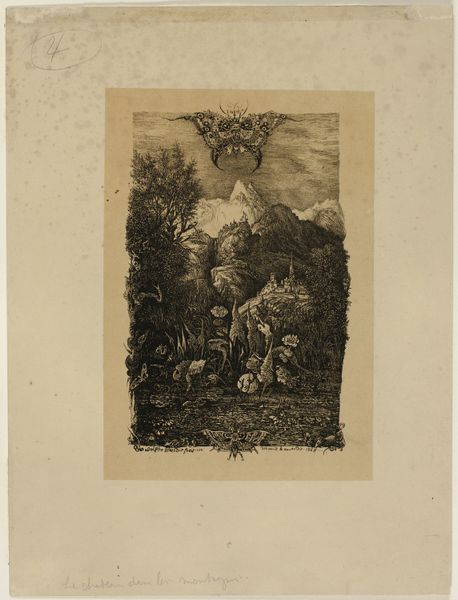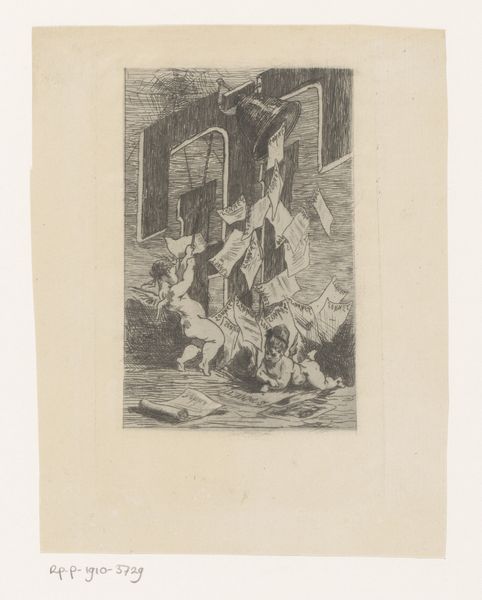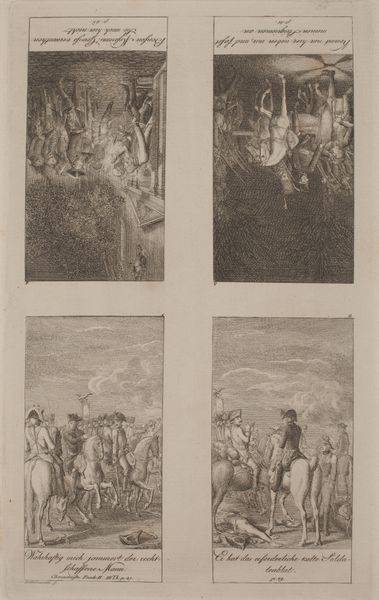
drawing, print, etching, ink
#
pencil drawn
#
drawing
#
narrative-art
# print
#
etching
#
pencil sketch
#
landscape
#
figuration
#
ink
#
romanticism
Dimensions: Plate: 9 5/16 × 6 1/4 in. (23.7 × 15.8 cm) Sheet: 10 9/16 × 6 3/4 in. (26.9 × 17.2 cm)
Copyright: Public Domain
Editor: So this is Célestin Nanteuil's "Bug-Jargal," a print from around 1827 to 1837. The composition, with the central figure framed by all this foliage and animals, gives it a dreamlike quality, almost like a theatrical set design. What's your take on this work? Curator: It's more than a dream, it's a construction, isn't it? Nanteuil presents us with an etching deeply rooted in the visual language of Romanticism, but one that needs to be critically examined. This image directly relates to Victor Hugo’s novel, *Bug-Jargal*, which romanticizes colonial dynamics within Haiti. What power dynamics do you see represented? Editor: I notice the central figure is a Black man, seemingly noble and heroic, standing against a mountainous backdrop. The lush border contrasts with him, maybe signifying his separation from both nature and society? Curator: Precisely. And doesn't this construction of "nobility" carry the weight of colonialism’s gaze? Nanteuil’s illustration freezes a moment ripe with the tension of a revolutionary Haiti – a space grappling with liberation from French rule. Note how the framing wildlife evokes a sense of the ‘exotic,’ almost trapping him. Consider how that exoticization ties into how European powers historically perceived and misrepresented colonized people and lands. Editor: I see what you mean. It's like the image, while seemingly celebrating the individual, also reinforces a sort of... otherness. It highlights the setting and the “exotic,” maybe overshadowing the actual struggle for freedom and equality. Curator: Yes. We have to ask ourselves: who is this image really for? What fantasies about race and power does it perform? Looking at Nanteuil’s etching, we begin to unravel not just the aesthetics of Romanticism, but also its problematic relationship with colonialism. Editor: Wow, I never thought of it that way. It really forces you to consider the broader context and the embedded power dynamics. Curator: Exactly! Engaging with art requires us to be critical interrogators, teasing out the hidden narratives that shape our understanding of the world.
Comments
No comments
Be the first to comment and join the conversation on the ultimate creative platform.
